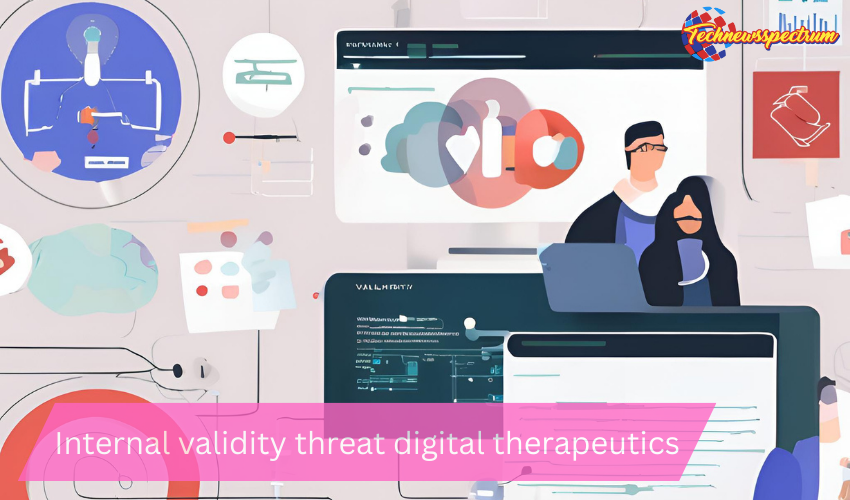Internal Validity Threat Digital Therapeutics
Meta Description: Internal validity threat digital therapeutics concerns influence treatment outcomes in clinical studies. Learn types, impacts and how to reduce threats.
Table of Contents
| Section | Description |
| Introduction | Overview of internal validity threats in digital therapeutics |
| What Are Digital Therapeutics? | Definition and application of DTx |
| Defining Internal Validity | What internal validity means in research |
| Internal Validity Threats in Digital Therapeutics | Key types of threats and how they emerge |
| Impact on Clinical Outcomes | How threats affect treatment accuracy |
| Key Features Influencing Validity | Features that either improve or harm validity |
| Mitigation Strategies | Practical methods to reduce threats |
| Benefits of High Internal Validity | Clear advantages for researchers and patients |
| Pros of Digital Therapeutics | Strengths and use cases |
| Drawbacks and Limitations | Challenges and flaws in current systems |
| Comparison Table | Contrast of DTx studies with and without validity threats |
| Real-World Examples | Studies showing internal validity challenges |
| Regulatory and Ethical Considerations | Oversight mechanisms to uphold validity |
| Technological Considerations | How tech design can prevent threats |
| Research Design Tips | Practical advice for ensuring valid research |
| Future Trends | Where digital therapeutics are heading |
| FAQs | Answers to common concerns |
| Final Thoughts | Summary and future outlook |
Introduction
Digital therapeutics (DTx) represent a growing frontier in healthcare innovation, offering technology-driven treatments supported by scientific validation. Yet, as these platforms move into clinical testing and real-world implementation, a core issue surfaces — internal validity threats. These threats undermine the ability to attribute outcomes to the intervention itself, potentially misguiding both clinical and regulatory decisions. Understanding and controlling internal validity threats is not optional; it is central to developing effective, equitable and trustworthy therapeutic software.
What Are Digital Therapeutics?
Digital therapeutics are evidence-based, software-driven interventions designed to treat, manage or prevent medical conditions. They differ from general health apps by undergoing clinical validation and often regulatory approval. DTx integrates behavioral science, machine learning and user feedback loops to deliver tailored health interventions.
Application Includes:
- Type 2 Diabetes Management
- Smoking Cessation
- ADHD Treatment
- Anxiety and Depression Support
- Chronic Pain Therapy
Core Elements:
- Scientifically validated treatment protocols
- Adaptive user interfaces
- Continuous engagement algorithms
- Remote patient monitoring
- Secure data exchange mechanisms
Defining Internal Validity
Internal validity refers to the confidence with which one can infer that a given outcome was directly caused by the intervention and not by confounding factors. In DTx trials, this assurance is frequently jeopardized due to digital, behavioral and technical variables.
Threat Categories:
- Design Flaws
- Measurement Errors
- Participant Biases
- Implementation Gaps
Maintaining strong internal validity ensures clinical decisions are based on true therapeutic value.
Internal Validity Threats in Digital Therapeutics
Digital therapeutic interventions face unique threats compared to traditional medical treatments:
| Threat Type | Description |
| Selection Bias | Tech-savvy or highly motivated participants skewing results |
| Performance Bias | Awareness of treatment affecting user behavior |
| Measurement Bias | Unreliable self-reports or device variability |
| Attrition Bias | Higher dropout rates due to app fatigue or tech issues |
| Confounding Variables | Tech literacy or digital access affecting outcomes |
| Adherence Issues | Inconsistent usage undermining measured effects |
Impact on Clinical Outcomes
Internal validity threats distort how DTx performance is perceived:
- Inflated Efficacy: Biases may exaggerate results
- Reduced Reproducibility: Future studies yield conflicting outcomes
- Poor Generalizability: Findings don’t apply to diverse populations
- Regulatory Delays: Evidence fails to meet rigorous standards
Effective evaluation demands the minimization of these threats through well-designed protocols.
Key Features Influencing Validity
| Feature | Enhances Validity | Risks Validity |
| Adaptive Algorithms | Personalization increases engagement | Can mask true intervention effects |
| Real-Time Feedback | Boosts user adherence | Might prompt behavior not linked to treatment efficacy |
| Self-Reporting | Cost-efficient and scalable | Prone to recall or desirability bias |
| Push Notifications | Encourages usage | Can create Hawthorne effect |
Mitigation Strategies
- Use randomized controlled trial (RCT) designs
- Implement blinding protocols where possible
- Standardize measurement tools and procedures
- Train participants with digital literacy materials
- Integrate real-time monitoring for adherence
- Analyze dropouts and perform intent-to-treat analysis
Benefits of High Internal Validity
- Clear cause-effect relationships
- Greater confidence among clinicians
- Higher chances of regulatory approval
- Easier integration into clinical workflows
- Better patient safety outcomes
Pros of Digital Therapeutics
- Non-invasive and user-friendly
- Scalable and cost-efficient
- Customizable to individual needs
- Continuous feedback and adjustment
- Easily integrated into daily life
Drawbacks and Limitations
- Digital divide limits access
- User fatigue reduces adherence
- Privacy concerns affect data quality
- Measurement inconsistency
- Requires robust user engagement strategies
Comparison Table
| Factor | Strong Internal Validity | Weak Internal Validity |
| Study Design | RCT with blinding | Open-label, non-randomized |
| Adherence Monitoring | Automated tracking and feedback | No adherence verification |
| Population Diversity | Broad, inclusive recruitment | Homogeneous, tech-savvy users only |
| Outcome Measurement | Validated tools, real-time logging | Self-reports without cross-checks |
Real-World Examples
- Sleepio (insomnia DTx): High retention and strong outcome measures
- reSET-O (opioid use disorder): RCT design reduced internal threats
- Happify Health (mental wellness): Struggled with engagement-related bias
Regulatory and Ethical Considerations
- HIPAA-compliant data handling
- Transparent consent processes
- Equitable access across demographics
- Oversight from ethics committees and regulatory agencies (e.g., FDA’s Digital Health Center of Excellence)
Technological Considerations
- Data interoperability
- Secure cloud infrastructure
- Accessible interface design
- Sensor accuracy and calibration
Research Design Tips
- Define inclusion/exclusion criteria clearly
- Include technology training modules
- Diversify sample demographics
- Perform sensitivity analyses
- Use mixed methods (quantitative + qualitative)
Future Trends
- AI-driven personalization
- Integration with wearables
- Global accessibility via multilingual platforms
- Increased collaboration with healthcare systems
FAQs
Q1: What is internal validity in digital therapeutics?
Internal validity refers to the degree to which the outcomes of a study can be confidently attributed to the interventions being tested rather than other variables.
Q2: Why is internal validity important in DTx trials?
Because digital therapeutics often involve dynamic and adaptive technologies, high internal validity ensures the observed effects are genuine and not influenced by external factors.
Q3: How can researchers improve internal validity?
By using techniques like randomization, control groups, validated measurement tools, and blinding.
Q4: What are the risks of ignoring internal validity?
Poor internal validity can lead to misleading conclusions, ineffective treatments, and wasted resources.
Q5: Can software design impact internal validity?
Yes. Features like adaptive algorithms or inconsistent feedback can introduce variability that undermines study reliability.
Q6: Are there regulatory guidelines for maintaining internal validity?
Yes. Organizations like the FDA and NIH provide standards and protocols to help ensure clinical trials are scientifically rigorous.
.
Final Thoughts
The credibility of digital therapeutics depends not only on innovation but also on evidence generated through methodologically sound studies. Internal validity threats are not just academic concerns — they determine whether digital treatments genuinely benefit users or merely appear to. Developers, researchers and regulators must collaborate to build DTx that are both effective and rigorously validated.







